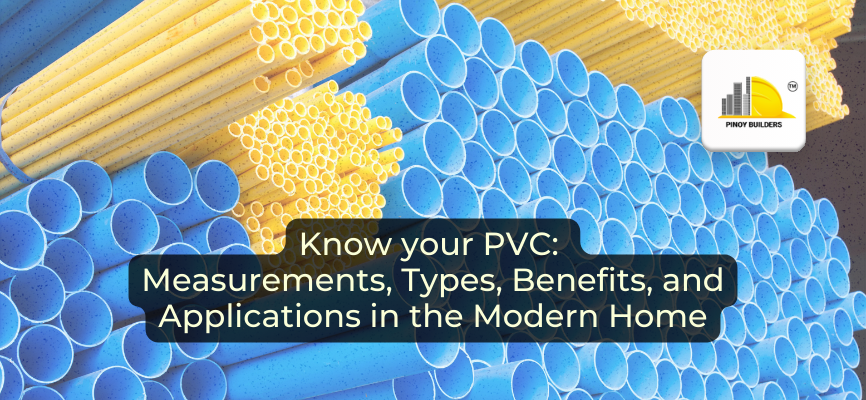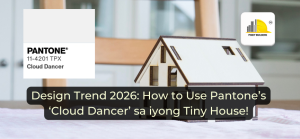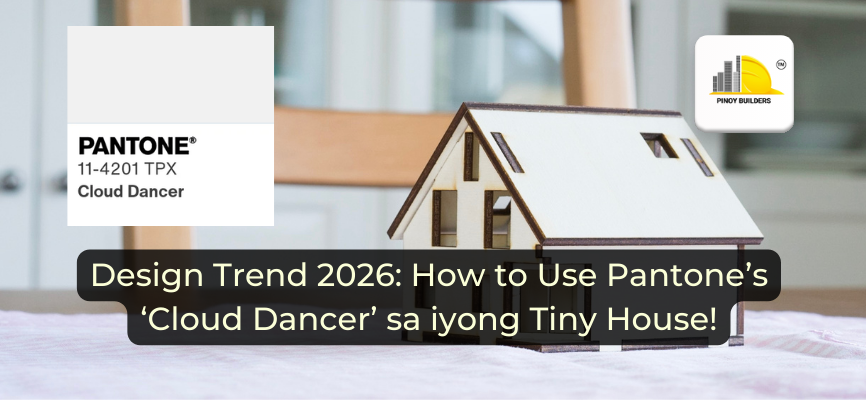Ever wondered what goes into making your home a comfortable and functional space? From the pipes that deliver clean water to the windows that frame your view, a surprising amount of the behind-the-scenes work is done with a material called polyvinyl chloride, or PVC.
PVC is a versatile and affordable material that has become a hidden champion in modern home construction, quietly revolutionizing everything from your pipes to your windows. Walking through a modern home, you might not realize it, but you’re likely surrounded by PVC. It definitely boasts several advantages that have cemented its popularity.
In this article, let’s dive deeper and explore the reasons why PVC has become an essential component in building the homes of today.
Know your PVC: Measurements, Types, Benefits, and Applications in the Modern Home

PVC, or Polyvinyl Chloride, is a synthetic plastic polymer composed of chlorine and ethylene. The manufacturing process involves polymerizing vinyl chloride monomers to create a robust and flexible material. Historically, PVC emerged in the early 20th century and has since evolved to become a staple in the construction industry, prized for its adaptability and resilience.
Types of PVC
Knowing the different types of PVC is important because there are various formulations suited for specific applications. Different PVC types have varying properties in terms of flexibility, strength, and chemical resistance. Picking the wrong one can lead to performance issues, like leaks in pipes or brittleness in electrical conduits. Below are the different types of PVC:
1. Rigid PVC (uPVC):
Unplasticized PVC, commonly known as uPVC, is characterized by its rigidity and strength. It is widely used in manufacturing windows, doors, and frames, offering excellent thermal insulation and weather resistance.
2. Flexible PVC:
This type of PVC is made pliable with the addition of plasticizers. It is often used in flooring, cables, and other applications requiring flexibility. Flexible PVC is known for its durability and ease of installation.
3. CPVC (Chlorinated Polyvinyl Chloride):
CPVC is PVC that has been chlorinated to enhance its heat resistance. It is ideal for hot and cold water pipes and industrial liquid handling, providing superior temperature tolerance compared to standard PVC.
Measurements and Standards
PVC pipes and fittings are designed to work together with specific dimensions. Precise measurements guarantee a proper fit during installation, preventing leaks and ensuring the overall performance of the plumbing system. If a PVC pipe installed is even slightly too wide or too narrow, you’d end up with leaks, wasted materials, and a system that may not function correctly.
Adhering to industry standards is critical to ensure compatibility and safety. Common standards such as ASTM and ISO specifications, dictate the quality and dimensions of PVC products, ensuring they meet the necessary performance criteria.
Why Should You Use PVC?
PVC pipes are a popular choice for plumbing and various other applications due to several advantages such as:
- Durability
PVC is renowned for its longevity and resistance to environmental factors, including weather, chemicals, and wear and tear.
- Cost-Effectiveness
Compared to alternative materials, PVC is affordable and offers excellent value for money, making it a popular choice for budget-conscious projects.
- Versatility
The wide range of applications, from plumbing to interior design, showcases PVC’s adaptability in the home.
- Low Maintenance
PVC products are easy to clean and require minimal upkeep, contributing to their appeal in residential settings.
- Environmental Impact
PVC is recyclable, and modern manufacturing processes are increasingly eco-friendly, reducing the material’s environmental footprint.
Applications of PVC in the Modern Home
Making informed choices: PVC is a versatile material used in many household items, from pipes to furniture. Knowing its properties, like durability and moisture resistance, can help you decide if a PVC product is the right choice for your needs. Below are the applications of PVC in construction.

1. Plumbing
PVC pipes and fittings are ubiquitous in residential plumbing due to their ease of installation and reliability.
2. Electrical
PVC serves as insulation for wiring and cables, providing safety and durability.
3. Building and Construction
Windows, doors, and frames made from PVC offer excellent insulation and longevity.
4. Interior Design
PVC is used in flooring, wall coverings, and even furniture, providing a blend of aesthetics and functionality.
5. Outdoor Use
PVC’s resistance to weather makes it ideal for fencing, decking, and outdoor furniture.
Step-by-Step Guide to Installing PVC
Installing a PVC product in your home varies. There are many types of flooring, fencing, pipes, and drainage systems made with PVC. Below is a general guide to installing PVC pipes in your home.
Gather Tools and Materials Needed
- Essential tools include a saw, adhesive, and measuring tape.
- Necessary materials comprise PVC pipes, fittings, and brackets.
Begin Preparation
- Measure the area accurately.
- Cut PVC to the required size using a saw.
Assemble the Items
- Fit the pieces together.
- Apply adhesive to secure the connections.
Installation
- Secure the PVC in place, ensuring alignment and stability.
Finishing Touches
- Clean any excess adhesive.
- Inspect the installation and make necessary adjustments.
PVC In The Modern Home

PVC’s significance in modern home construction cannot be overstated. Its versatility, durability, and cost-effectiveness make it an invaluable material for a wide range of applications. Homeowners and builders alike are encouraged to consider PVC for their next project, exploring its myriad benefits and practical uses. Whether for plumbing, electrical insulation, or stylish interiors, PVC continues to prove its worth as a modern building material.










